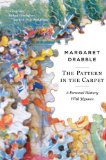Summary | Excerpt | Reading Guide | Reviews | Beyond the book | Read-Alikes | Genres & Themes | Author Bio

The True Story of the Disastrous Marriage and Remarkable Divorce of Mary Eleanor Bowes, Countess of Strathmore
by Wendy Moore"Wedlock is a padlock/When you're married to a no-good man," sang R&B chanteuse Laura Lee in 1972. That lyric would make an ideal epigram for this biography of Mary Eleanor Bowes, a bright and flirtatious aristocrat whose married life should have encompassed galas, theatrical outings, and pursuit of the botanical studies she adored. Instead, Mary inadvertently became a figurehead for women's rights in late 18th-century England when she successfully obtained a divorce from her tyrannical husband: no easy feat in an era that condoned beating wives to keep them in line and denied them all material possessions.
Although the first Gothic novels didn't appear until the dawn of the 19th century, Mary's adventures, roughly spanning the 1760s-1780s, could easily pass for the sort of darkly tantalizing fiction that readers sought in Frankenstein and The Monk. Having already endured one miserable marriage that resulted in giving birth to five children by the age of 25 and then becoming a widow before she was 30, Mary should have steered clear of Irish fortune hunter Andrew Robinson Stoney's facile charms. To her credit, though, Stoney's elaborate ruse to trap her into marriage would probably have fooled many an intelligent woman, designed as it was to appeal to vanity; duels fought on behalf of women's honor proliferated during this period, and few women could have suppressed their pleasure at capturing such chivalrous attention.
Stoney had already married one woman and driven her to the grave, but his abuse of Mary soon reached epic proportions that stunned even jaded Georgian England. With its appetite for celebrity gossip, preoccupation with wealth, and lurid enjoyment of sensational stories, this society bears a disconcerting resemblance to 21st century America. It should thus come as no surprise that Stoney resorted to commissioning lewd caricatures of Mary to display in print shops as a means of retaliating against her for initiating divorce proceedings; does this significantly differ from posting embarrassing details about an ex on blogs, social networking sites, and YouTube?
Flipping through Wedlock's index, I was impressed by Wendy Moore's ability to transform notes from tomes with dispiriting titles like The Great Northern Coalfield 1700-1900 into such an engaging tale. This author clearly knows how to resurrect history from dry names and dates, often with a quiet wit, as when she comments on the medical procedure that two doctors used on a duelist: "Whatever benefit the pair may have bestowed…was almost certainly reversed when they cut open a vein in their patient's arm to let blood, the customary treatment for almost every ailment". Moore's wide-ranging knowledge of 18th-century medicine, marriage customs, birth control, child-bearing and rearing, botanical discoveries, and the first glimmers of suffrage always illuminate the subject without bogging down the fast-paced narrative. In a biography that includes duels, hoaxes, kidnappings, and daring escapes, one might view these historical forays as asides at best and obstacles to momentum at worst, but Moore seamlessly blends them into Mary's story, allowing us to gain a wider perspective on the barriers that she faced in trying to divorce her tormentor.
For Stoney (eventually known as Bowes in the book; Mary's father had decreed that any man who married her must take her surname instead of the other way around) is as foul and fascinating a villain as any Dickensian rogue. A man who flaunts his extramarital affairs; fathers numberless children for whom he provides nothing; beats, degrades, and even rapes his wife and mistresses; and has the gall to keep a mistress in prison with him (a wretched girl named Polly who bears him five children in captivity), Stoney/Bowes surely ranks as every woman's worst nightmare. That a society as misogynist as Georgian England recognized his utter despicableness and granted Mary her divorce (despite her husband's numerous appeals) speaks volumes. That Wendy Moore vividly recreates this eerily familiar era with a historian's love for detail and a storyteller's passion for a good yarn is an added bonus.
![]() This review was originally published in The BookBrowse Review in May 2009, and has been updated for the
March 2010 edition.
Click here to go to this issue.
This review was originally published in The BookBrowse Review in May 2009, and has been updated for the
March 2010 edition.
Click here to go to this issue.

If you liked Wedlock, try these:

by Tracy Chevalier
Published 2010
A voyage of discoveries, a meeting of two remarkable women, and an extraordinary time and place enrich bestselling author Tracy Chevalier's enthralling new novel.

by Margaret Drabble
Published 2010
An original and brilliant work. Margaret Drabble weaves her own story into a history of games, in particular jigsaws, which have offered her and many others relief from melancholy and depression.
Some books are to be tasted, others to be swallowed, and some to be chewed on and digested.
Click Here to find out who said this, as well as discovering other famous literary quotes!
Your guide toexceptional books
BookBrowse seeks out and recommends the best in contemporary fiction and nonfiction—books that not only engage and entertain but also deepen our understanding of ourselves and the world around us.